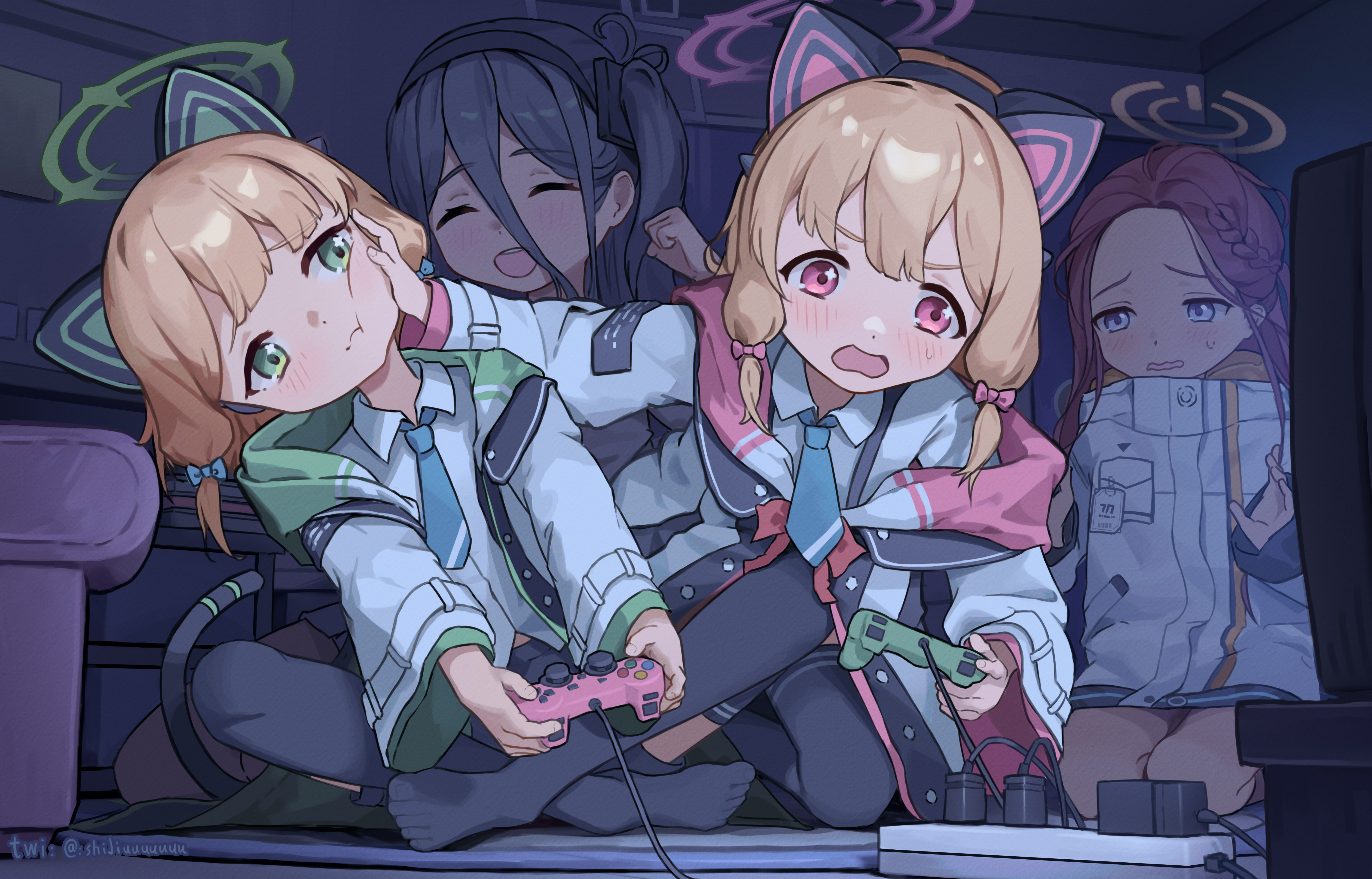/cardfight vanguard s3 - this guy over here knows the reality of this game Animax doesnt.jpg)
This guy over here know the harsh reality of this game that Animax doesn't want to admit.
It has been quite some time since I reviewed a sequel of an existing anime series I reviewed here before, with the third Evangelion movie being the last a year ago. Therefore today I will review the third installment of the Cardfight!! Vanguard series, titled Cardfight!! Vanguard – Link Joker Hen. This anime is arguably is the best installment in the series to date, so let see if the third iteration will be able to overcome the double handicap this series is plagued with.
/cardfight vanguard s3 - and the main protagonist slowly will admit what this is all about.jpg)
And even the main male protagonist will slowly admit what this game is all about.
Story:-
A year has passed since the start of the first season, and our main male protagonist is now a high-school student, enrolling in the same school as his card game teammate, the beautiful surly white-haired girl I mentioned before in my synopsis of the first season of this anime. Then one of the members of the Ultra-rare idol group transfer into his class and together, they created a Cardfight!! Vanguard club in the school so that they can aim for the nationals.
Cashing in from character builds up from the first and second season, the set up at the start of the anime is solid. New characters from the main male protagonist’s high school plus the possibility of a love triangle, the first half of this anime consists of the plot where the newly formed card-playing card trying to fight their way to the nationals. The first half of the anime is definitely its best part; it is like watching Cross Game, but with card games instead of baseball. And not much different compared to the whole plot of the first season.
Unfortunately, the second half of this anime consists of a ‘save the world’ plot again, just like the final arc of the second season. Unlike in the second season, this season’s ‘save the world’ plot takes up more episodes than it does in the season before it. Quality-wise, the story in this part is better than the one in the second season though, but still there are some issues about this part (and others too) that I will address below. The ending is typically predictable for an anime with these kind of stories, and whatever loose ends that are still left by the time the last episode finished playing may or may not be addressed in the fourth season that is currently airing. I will definitely watch one too in the future.
/cardfight vanguard s3 - quoted for truth.jpg)
Quoted for Truth!
I have already mentioned some of the gameplay changes in this season in my review of the second season, so I will not repeat them here. The only new extra change I have seen after writing the second season’s review is the Quintet Wall, a vanguard-shielding technique that can be used by some of the card types in the series (the decks of the main male protagonist and the blonde Ultra-rare member can do so). I do not really like the fact that this technique are introduced fairly late into the third season, and without any significant deck reshuffling/reconstruction by the owners of the qualifying decks. If the main male protagonist has been able to use this technique in the first place during the first phase of the anime, why he did not use it during the qualification tournament for the nationals? That technique may be able to secure his team a spot in the nationals.
/cardfight vanguard s3 - this deux ex machina card really does not help this anime one bit.jpg)
This deux-ex-machina card really does not help this anime one bit. And the user of the card still managed to lose even with that card.
As I have mentioned in my review for the previous two seasons, the card game that underpinned the essence of this series is basically a luck-based game. This has not changed in this season at all. A couple of things to note here. The first one is that the third season employs the ‘deux ex machina’ plot device more gratuitously like the one shown in the screenshot above. This is a weakness in writing because the antagonistic Link Joker deck’s locking system can actually be circumvented reasonably easily (without needing the trigger card drawing luck) with correct tactics. Now if the Link Joker deck has a certain power that the surly white-haired girl’s first deck in the first season has, Link Joker would have become virtually invincible.
/cardfight vanguard s3 - the living proof of what this game is all about.jpg)
The living proof of what the card game is all about.
Another thing I noticed about the gameplay in the third season is the lack of Persona Blast usage and that I have never seen any of the characters draw a stand trigger card during the battles in the ‘save the world’ story arc. And maybe in the ‘go to the nationals’ arc too. I can understand not using the Persona Blast tactic, which is a powerful tactic used in the first season, when alternatives like Break Ride exists. Persona Blast could have made for a more variety in tactics though, so it is a shame to not see it at all in the third season. I wonder what kind of skill can be triggered when two ‘reversed’ cards are used in a Persona Blast, I can only imagine that would make for an awesome augmentation for/of the locking system.
The lack of stand trigger cards baffles me though, that at the end of this season, I actually thought that stand trigger cards has actually been removed from the gameplay. But after watching a couple of episodes from the still running fourth season, it seems that that isn’t the case. I wonder if the characters in this third season actually removed them from their deck composition, which for me is suboptimal for tactics variation.
Character developments in the third installment of this series is at least better than in the previous one; no more character sabotaging by not letting any characters not being able to use new techniques that this season has provided. But in this season where almost all the recurring characters has matured; heck, the main male protagonist is now the strongest in the planet, character developments for those recurring characters are largely restricted to upgrades in their decks. The new characters, mainly from the main male protagonist school, are merely the protagonist’s sidekick at best in the card game club, and their character development reflects that too.
There is also a mystery I really want solved: During the ‘save the world’ arc, where has the biggest fan of Ultra-rare’s blonde member has gone to? Did he got ‘reversed’? Or did he fought the force of evil with his sidekick that has also gone missing while his idol herself is getting ‘reversed’? Or more likely, the writer just forgot about him? Character management really takes a nose-dive here in the third season. Not to mention the extremely large plot hole in the scene below.
/cardfight vanguard s3 - did the writer ever consider the huge plot hole this event will cause when writing this scene.jpg)
Did the writer ever consider the huge plot hole this event will cause when writing this scene?
Character Design:-
Largely, my comment for this section in the first season’s review still applies. The surly white-haired girl sure has become hotter after cutting her hair to shoulder length.
Voice Acting:-
My comment for this section in the first season’s review still applies.
/cardfight vanguard s3 - the tsundere of the series.jpg)
The tsundere of the series. What will happen if a tsundere character acquire 'yandere characteristics' as a result of being 'reversed'? Protip: Nasty things coming the way of the main male protagonist.
Music:-
The first OP theme of the third season of this series is the best ever so far across all three seasons, although this definitely will change in the fourth season. The other two OP themes are quite OK too. The first ED theme is also good, but not for the next two ED themes. The OST is still good just like in the previous two seasons.
/cardfight vanguard s3 - the main antagonist of this season.jpg)
The suprisingly cute main antagonist of this season.
Voice Acting:-
Despite the additions of new characters, my comment for this section in the first season’s review still applies.
Animation/Direction:-
The usage of blurry animation technique just like the first two seasons mean one point will be docked from the final evaluation. The animation quality in this season mirrors what is seen in the second season instead of the atrocious one in the first season. The director’s performance has really regressed though this season, with missing characters, missing cards and missing techniques.
/cardfight vanguard s3 - one season too late for you to do this.jpg)
One season too late for you to do this.
Conclusion:-
6 out of 10. If not for the aforementioned handicaps, this anime would have had the same score as the current ‘Anime of the Year 2013’ holder Yahari Ore no Seishun Love Come wa Machigatteiru, although the latter would still win though. The currently running fourth season would have a hard time matching this third season in terms of quality because it does not have a strong start like this one.
Shortlink: http://wp.me/prgSo-DC






















